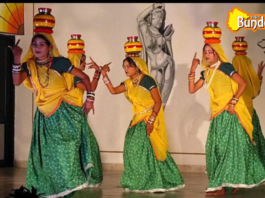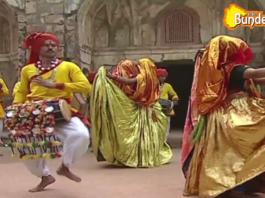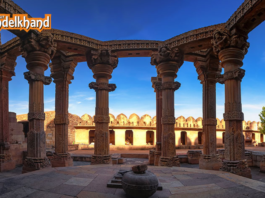Introduction: Where Culture Breathes in Every Dusty Road and Drumbeat
As someone who grew up listening to the stories of Alha and Udal, and later walked through the sacred grounds of Chitrakoot and Kalinjar, I can say this with pride — Bundelkhand is not just a region; it’s a living, breathing museum of India’s soul.
Here, culture is not confined to textbooks or museums. It thrives in the rustling of anklets during Rai dance, in the deep voices echoing Alha-Khand ballads, and in the rustic warmth of every village festival. If you’re looking to explore Indian culture beyond mainstream narratives, Bundelkhand is your doorway.
Let me take you inside this cultural heartland — through its festivals, folk songs, rituals, and forgotten traditions that continue to shape its identity.
1. The Rhythm of the Land: Folk Music That Speaks to the Soul
You haven’t really experienced Bundelkhand unless you’ve heard the Alha-Khand being sung under a banyan tree in a moonlit village gathering. These epic ballads — tales of bravery, loyalty, and sacrifice — date back to the 12th century and still bring goosebumps to listeners.
Other musical traditions like:
- Dadre, Kajri, and Sohar (sung during childbirth and weddings)
- Nirgun bhajans by Kabir followers
- And the Diwari dance songs during Deepawali…
…they all reflect the raw emotion and spiritual depth of Bundeli life.
2. Festivals that Light Up Villages and Hearts
In Bundelkhand, every festival is more than a celebration — it’s a ritual of collective memory and joy. Even the smallest village organizes events that carry deep symbolic meaning and unmatched local energy.
Here are a few that left a deep impression on me:
Kajli Teej (Lalitpur)
A unique Teej celebration where women carry beautifully decorated Kajli trees, sing regional songs, and gather in large processions.
Holi and Diwari (Different from Deepawali)
Holi here isn’t just about color — it’s about bhagats (folk performers), dhol-nagadas, and often includes mock war performances inspired by Alha traditions.
Deepdaan Mahotsav (Chitrakoot)
Thousands of lamps lit on riverbanks, with devotional songs and temple bells in the background — a spiritual spectacle I’ll never forget.
3. Traditional Attire & Ornaments: Identity in Fabric
Cultural richness is also reflected in how people dress. Women in Bundelkhand proudly wear:
- Lehenga-choli with odhani
- Bichua (toe rings) and baajubandh (armlets)
- Bright glass bangles, and ornate mangalsutra designs unique to this region
Men often wear dhoti-kurta with gamcha, and during festivals, performers dress up in colorful warrior attire or tribal-inspired outfits for folk performances.
These styles are not for fashion — they represent age-old beliefs, identity, and emotion.
4. Folk Art, Rituals & Forgotten Practices
From floor art (mandana) during festivals to making clay idols and bamboo craft, Bundelkhandi homes are full of unspoken art forms passed from mothers to daughters.
Some rare cultural practices you’ll still find in interior villages:
- Jhoolan Utsav during Shravan
- Satyavrat Kathas during Ekadashis
- Guru Purnima gatherings in gurukuls & temples
These rituals have survived centuries of change, silently telling stories of faith, harmony, and nature worship.
5. Why Bundelkhand’s Culture Matters Today
In today’s fast-paced world, regions like Bundelkhand remind us of the roots we often ignore. Its culture is not commercial — it’s real, raw, and rooted.
As someone who has walked these lands, shared food during village festivals, and listened to folk elders narrate stories under starlit skies, I can confidently say:
If we want to preserve India’s true cultural richness, we must listen to Bundelkhand.
Final Thoughts: Come See, Hear & Feel It Yourself
Reading about culture is one thing — experiencing it is another. Bundelkhand invites you not just as a traveler, but as a listener, learner, and participant.
So whether you’re a culture enthusiast, content creator, or a seeker of soulful travel — step into Bundelkhand. And don’t just see it — feel it.




